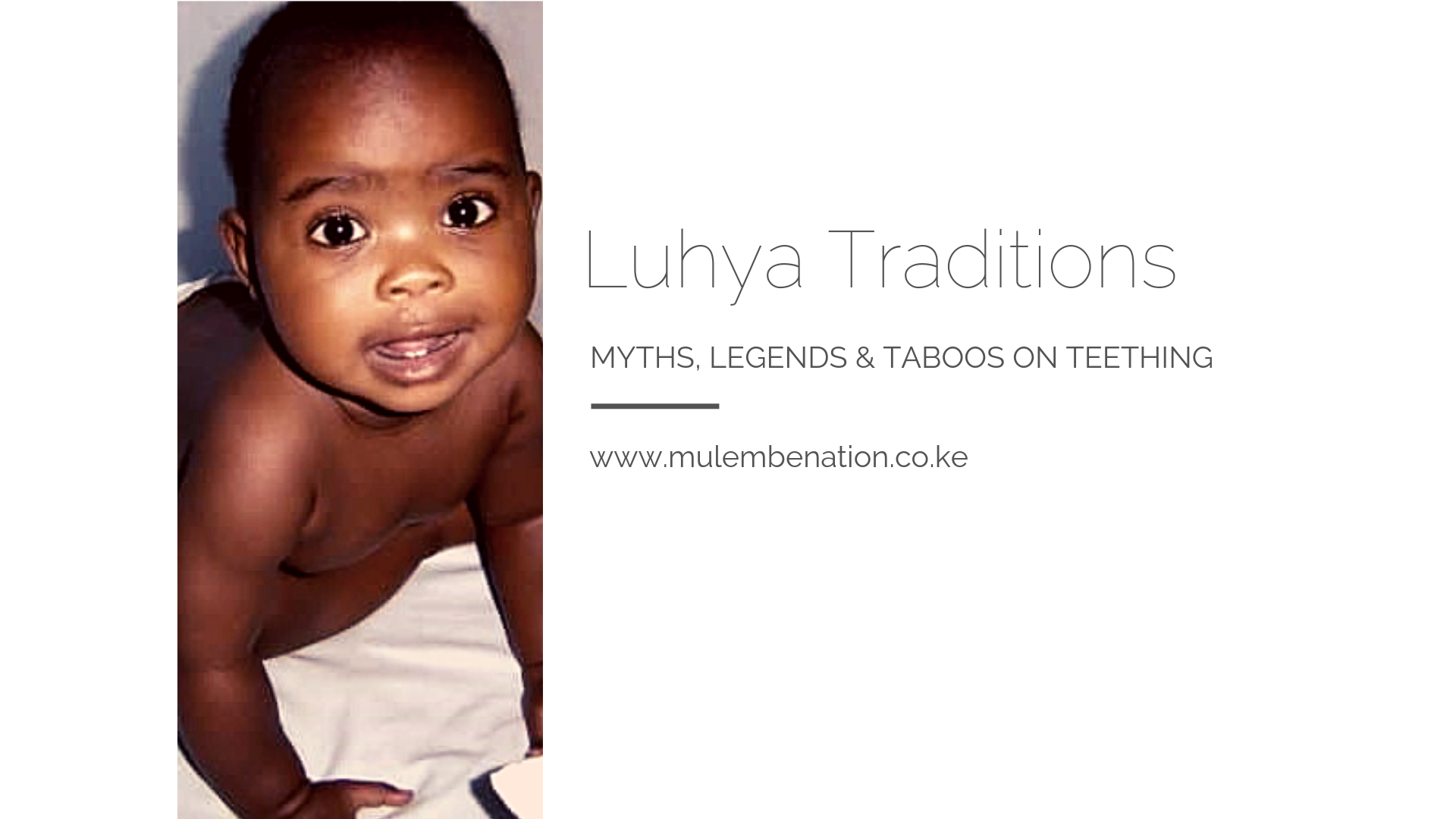Some time back, we named our babies. Though we are yet to explore the whole shebang of naming and how luhya names come about, but some justice was done with our piece on Bukusu naming traditions. Today we talk about a phase in a baby’s development that can be the most embarrassing for young, inexperienced parents – teething. This event is significant among the Luhya as evidenced the seriousness of these three Luhya baby teething traditions, myths and legends (one each) that we’ll explore today.
Often, western ways impose on us that a child’s first words are the most significant. This makes speech the more significant childhood milestone. For the luhya, baby teething possibly comes first. Not because of the butt of cliche stereotypical jokes on our appetite and love for food; but because teething marked the first signs of an infant gaining the tools for self dependence. I agree with my forefathers on this one. Teeth are not only biting tools but also vibe. So we kick off our foray into today’s dose of Luhya folklore on this talking note.
The Tradition: Hush hush
Rule number one is the most known of Luhya baby teething traditions: Do not talk about it. If you know, you know. A typical scenario is as follows: Young parents (read: me) would be all stressed out thinking that their baby is ill. Guku (grandma) would ask to see the grand child before they rush to hospital. In a routine that only she knows (one which is not obvious to the untrained eye) grandma would perform a quick head to toe examination.
Once satisfied that her diagnostic criteria has been met, Khukhu would dissuade the parents not to make the hospital visit. She would rather claim the child’s illness had been caused by ‘evil eyes’ than say it loud. For saying it loud meant stopping the teeth from growing.
Further, not wanting to wish such a calamity upon her growing grandchild soon in need for teeth as they are weaned, a prescription would be made. Concoction this or that from x or y culturaly significant tree would be made. This traditional fix was needed to buy time to allow for the 24 hours or so needed for the turbulent period of teething to pass.
The Legend: The green gram decoy
This Luhya baby teething legend is closely tied to the first tradition of hush hush, this trick was played by adults on the siblings of the teething infant. Once the growing teeth had crowned and were visible embedded in the gums, it’s expected that the elder siblings would be excited. For children, excitement means vocalizing the ‘good news’ even to strangers.
But in ancient mulembe land, one doesn’t go voicing their business to all and sundry. Why? Evil eyes. So to keep the little mouths shut by distracting their minds, the adults devised a cunning little plan. The children would be tasked with taking single grain of of dry grain ( green grams usually) and hide it at the base of the pot that held the household’s drinking water.
This area would usually be perennially damp from spillages and leakage from the point. The task then became impossible. They children were to watch and wait for the dry grain to sprout. The germination of the grain explained as analogous the the baby’s teeth sprouting.
The Myth: Infant talking too much about sugarcane
Among the signs Kukhu would be on the look out for during her head to toe examination would be excessive salivation by the infant. Alongside being feverish and possibly diarrhea episodes, excessive salivation is the most common sign that an otherwise healthy infant (of the appropriate age) is teething.
Dripping saliva being a hard occurrence to ignore, and in light of the need to observe the not talking about it rule, trust the ingenious Luhya to come up with something. So they explain the salivation as the infant growing up to be a very talkative person. If not, then sure as rain, the infant’s mother must have craved for and eaten lot of sugarcane during pregnancy.
The Taboo
Under no circumstances would the infant have his/her upper incisors sprout first. Such an occurrence was considered a bad omen and was never talked about or mentioned. So much so that the author doesn’t know what the bad omen is. Do you know of any luhya traditions, myths and legends on baby teething that we have left out? Hit us in the comments. See you there.

